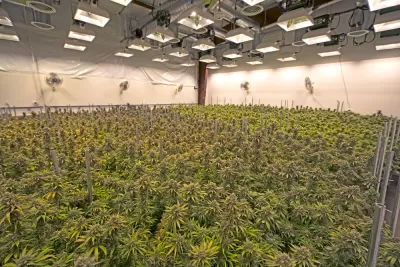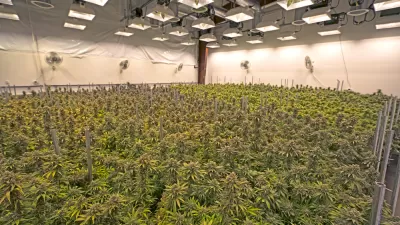Officials overseeing cannabis implementation are having to deal with residents’ complaints that the smell from marijuana operations is overwhelming.

Recreational cannabis has been legal in California since January, but one part of implementation and regulation is proving challenging. In counties throughout the state, residents describe the smells emanating from commercial operations as something akin to skunk, rotting lemons, and sulfur, reports Thomas Fuller:
"It’s as if a skunk, or multiple skunks in a family, were living under our house," said Grace Guthrie, whose home sits on the site of a former apple orchard outside the town of Sebastopol. Her neighbors grow pot commercially. "It doesn’t dissipate," Ms. Guthrie said. "It’s beyond anything you would imagine."
Cannabis growers say that smells are an expected part of agricultural operations, but municipalities were not prepared for odor to be a primary issue related to marijuana production. "Of the more than 730 complaints Sonoma County has received about cannabis this year, around 65 percent are related to odor, according to Tim Ricard, the county’s cannabis program manager," says Fuller.
Residents in Sonoma County are calling for a ban on cannabis operations; Mendocino County has established zones where it is prohibited. Odor-control systems are another strategy for dealing with the stink, but this equipment is expensive and many operators cannot afford it.
Also, part of the problem for local officials is developing a standard for smells, which can be subjective and hard to quantify. Colorado, which legalized cannabis in 2014, uses a device called the Nasal Ranger to measure odor levels. California, however, has yet to adopt this technology.
FULL STORY: ‘Dead Skunk’ Stench From Marijuana Farms Outrages Californians

Planetizen Federal Action Tracker
A weekly monitor of how Trump’s orders and actions are impacting planners and planning in America.

Maui's Vacation Rental Debate Turns Ugly
Verbal attacks, misinformation campaigns and fistfights plague a high-stakes debate to convert thousands of vacation rentals into long-term housing.

Restaurant Patios Were a Pandemic Win — Why Were They so Hard to Keep?
Social distancing requirements and changes in travel patterns prompted cities to pilot new uses for street and sidewalk space. Then it got complicated.

In California Battle of Housing vs. Environment, Housing Just Won
A new state law significantly limits the power of CEQA, an environmental review law that served as a powerful tool for blocking new development.

Boulder Eliminates Parking Minimums Citywide
Officials estimate the cost of building a single underground parking space at up to $100,000.

Orange County, Florida Adopts Largest US “Sprawl Repair” Code
The ‘Orange Code’ seeks to rectify decades of sprawl-inducing, car-oriented development.
Urban Design for Planners 1: Software Tools
This six-course series explores essential urban design concepts using open source software and equips planners with the tools they need to participate fully in the urban design process.
Planning for Universal Design
Learn the tools for implementing Universal Design in planning regulations.
Heyer Gruel & Associates PA
JM Goldson LLC
Custer County Colorado
City of Camden Redevelopment Agency
City of Astoria
Transportation Research & Education Center (TREC) at Portland State University
Jefferson Parish Government
Camden Redevelopment Agency
City of Claremont





























